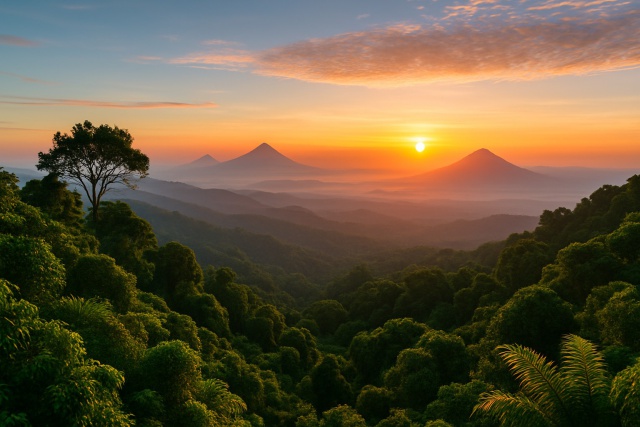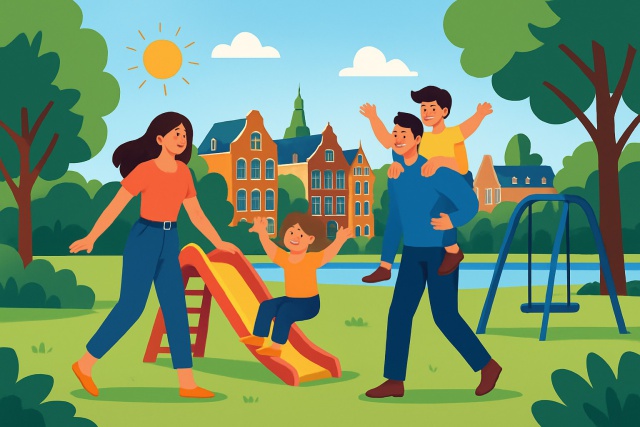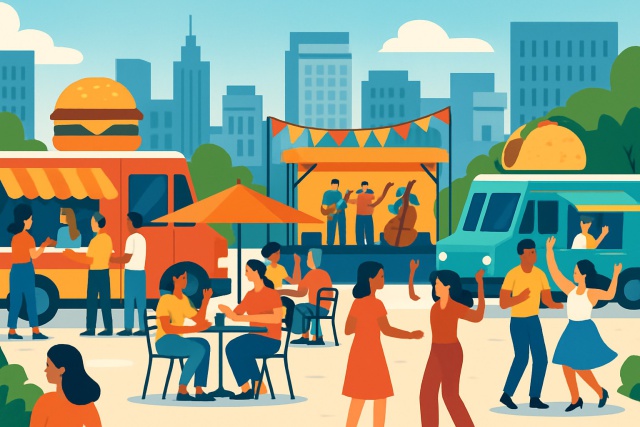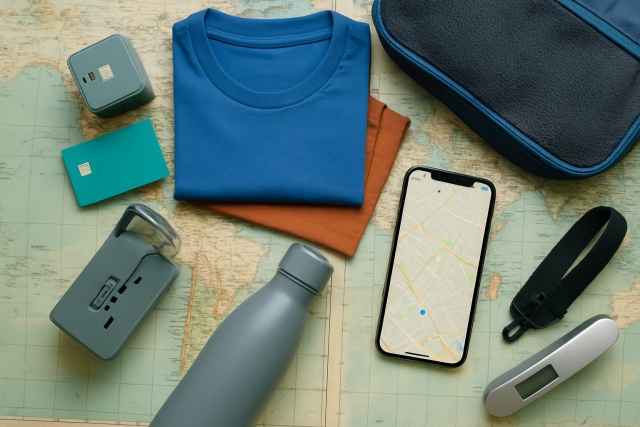What Is Colombia Most Known For Beyond Coffee and Flowers
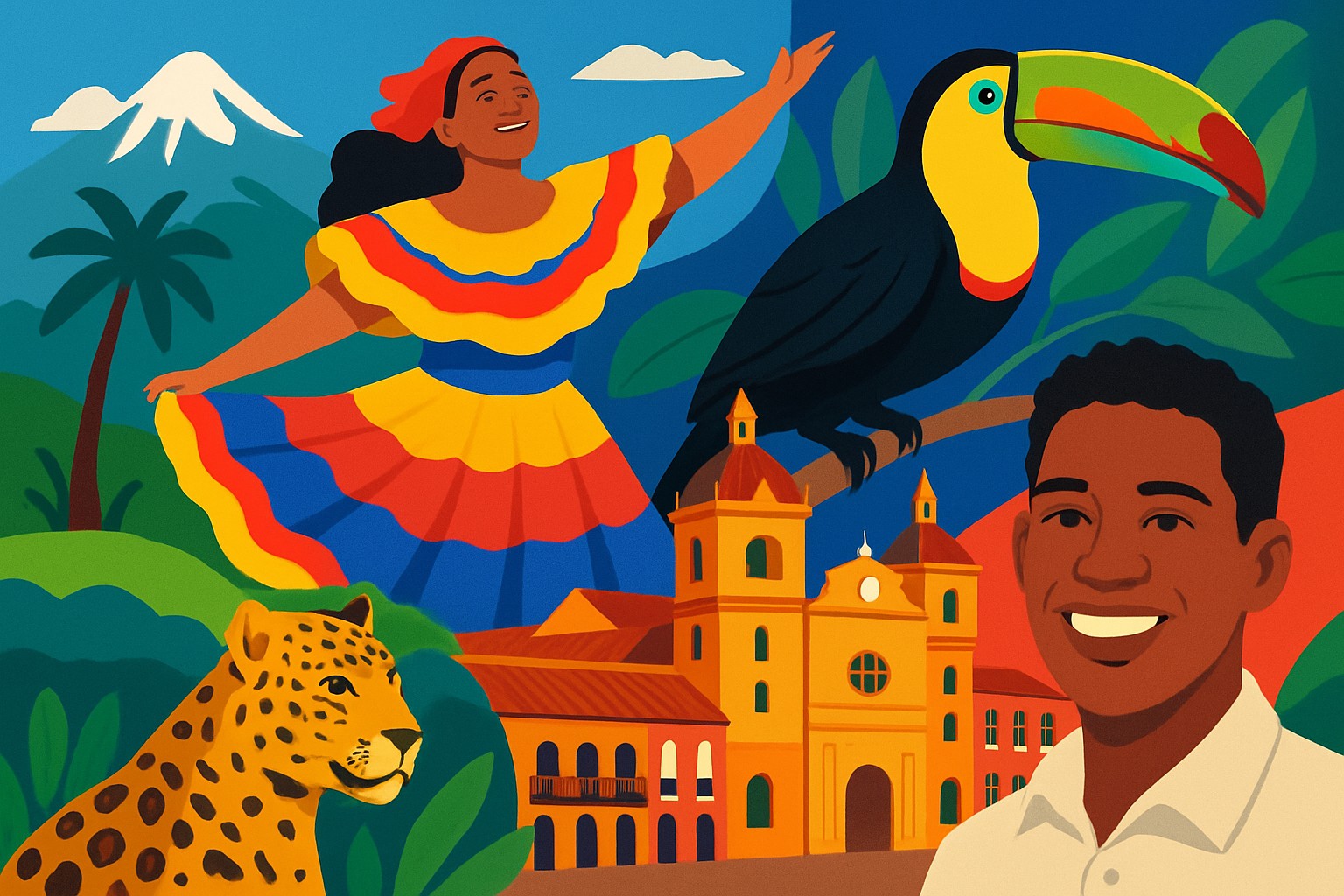
When considering what is colombia most known for, many people around the globe would say coffee and flowers, but trust me this South American gem has much more up its sleeve. It’s a diverse nation bursting with rich culture and a patchwork of landscapes. It has a deep and sometimes colorful history plus plenty of clever innovation to keep things interesting.
Colombia's Geography and Diversity A Rich Tapestry of Nature and Culture
To really wrap your head around what shapes Colombia, you’ve got to begin with its geographic and ecological variety. The country stretches along the Pacific Ocean and the Caribbean Sea. It boasts the towering Andes mountains, cradles a vast chunk of the Amazon rainforest, and spreads across the wide plains known as the Llanos.
- The Andes Mountains stand tall and proud in Colombia with three parallel ranges that shape the climate and decide where people make their homes.
- The Amazon Basin is swathed in dense tropical rainforests and is a global powerhouse for biodiversity that plays an important role in keeping our climate in check.
- Along the Caribbean Coast, you’ll find vibrant cultural hubs and bustling port cities nestled against a sun-kissed tropical shoreline.
- The Pacific Coast is famous for its lush rainforests and is one of the wettest spots on the planet.
- The Llanos Plains stretch wide with expansive savannas and wetlands that serve as vital grounds for farming and a haven for wildlife.
- The Magdalena River Valley acts as a lifeline for transportation and trade and has a long rich history of human settlement.
A Deep and Vibrant Cultural Heritage That Resonates Through Time
Colombia’s cultural fabric is woven from indigenous roots and African influences that came over during the transatlantic slave trade. It also carries the enduring marks left by Spanish colonial rule. This delightful mix bursts to life in lively music and dance traditions, colorful festivals that can brighten even the grayest day, a vibrant patchwork of languages and a treasure trove of culinary specialties that vary from one corner of the country to another.
- Cumbia and Vallenato music feature rhythms that blend indigenous, African and European influences. Each beat tells a story passed down through generations.
- The Carnaval de Barranquilla is one of South America's biggest and most vibrant festivals. It bursts with lively dance and colorful costumes. The folklore truly brings the streets to life.
- Traditional indigenous crafts like woven baskets and pottery are not just souvenirs. They are heartfelt expressions of culture that still hold a special place today.
- Afro-Colombian heritage shines brightly along the Pacific Coast through spirited music and captivating dance. Unique culinary traditions really tantalize the taste buds.
- Regional dishes include favorites like arepas, empanadas and the ever-filling bandeja paisa. This comfort food has a story in every bite.
- Spanish takes the official spotlight but many indigenous languages still thrive in rural pockets. These keep those ancient voices alive and kicking.
Biodiversity Truly One of the World's Most Ecologically Diverse Countries
Colombia often finds itself near the top of the list when it comes to the world’s richest countries in biodiversity, flaunting an impressive variety of species across ecosystems that stretch from lush tropical rainforests to rugged mountainous highlands.
| Category | Colombia's Species Count | Global Rank | Examples of Notable Species |
|---|---|---|---|
| Birds | Over 1,900 | 2nd | Andean condor, Scarlet ibis, Harpy eagle |
| Amphibians | More than 700 | 1st | Golden poison frog, Glass frogs |
| Mammals | Around 450 | 2nd | Spectacled bear, Colombian woolly monkey |
| Plants | Exceeds 50,000 | 2nd | Wax palm (national tree), Orchid species |
Colombia really rolls up its sleeves when it comes to safeguarding its natural treasures by boasting an impressive network of national parks and biological reserves. These protected areas are not just about putting a fence around pretty scenery—they play a key role in preserving vital ecosystems, countless species and irreplaceable habitats. At the same time, they serve as hubs for scientific research and promote sustainable tourism. They strike a delicate balance that is easier said than done. What’s heartening is how government agencies often team up with local communities to tackle tough challenges like deforestation, illegal mining and habitat loss.
Historical and Archaeological Importance
Colombia's history stretches back thousands of years, rooted in ancient pre-Columbian civilizations such as the Muisca and Tairona. Scattered across the landscape, numerous archaeological sites and colonial landmarks offer fascinating glimpses into these early cultures and the sweeping changes brought on by Spanish conquest and settlement.
- Ciudad Perdida, often called the Lost City, is an ancient indigenous settlement dating back to around 800 CE quietly nestled in the Sierra Nevada mountains like a well-kept secret.
- San Agustín Archaeological Park boasts one of South America's largest and most impressive collections of prehistoric stone sculptures, a real treat for history buffs.
- The Muisca people were masterful goldworkers renowned for their intricate artifacts and the captivating legend that gave birth to El Dorado.
- Colonial-era cities such as Cartagena still proudly wear their history on their sleeves with fortresses, churches and plazas that tell stories spanning centuries.
- Bogotá, the bustling capital, houses significant museums like the Gold Museum which beautifully highlight the rich tapestry of both indigenous and colonial heritage.
Economic Contributions That Go Well Beyond Just Coffee and Flowers
Coffee and flowers still hold a special place in Colombia's economy, but there’s a whole cast of other industries pulling their weight too. The oil and mining sectors are heavyweight players, not to mention Colombia’s claim to fame with some of the finest emeralds you’ll find anywhere in the world. Toss in the textile and fashion industries, which are thriving both locally and on the global stage. Meanwhile, technology startups are quietly gaining steam.
- Petroleum and natural gas extraction remain major contributors to export income and continue to support the national budget.
- Colombia is well known for its emeralds that have important share of the global market and truly put the country on the map.
- Coal mining fuels the domestic market and drives international trade, making it an important part of the energy sector.
- The apparel and fashion industry is growing rapidly and expanding its presence on the global stage.
- Tech startups focused on fintech, e-commerce and software development are sparking innovation and creating jobs, making it a win-win situation.
- Tourism shines by highlighting Colombia's stunning natural landscapes and vibrant cultural festivals. It also showcases rich historic landmarks, attracting travelers from around the world.
The Vibrant Cities and Eye-Catching Architecture of Colombia
Colombia's main cities like Bogotá, Medellín and Cartagena are true melting pots of culture and economy. They blend colonial history with modern flair to create a unique vibe that is hard to resist. Museums and art galleries pop up around every corner. Urban renewal projects quietly work their magic and prove these cities know how to honor their roots while charging confidently into the future.
- Bogotá boasts world-class museums like the fascinating Gold Museum nestled in lively cultural neighborhoods such as La Candelaria that bring the city to life.
- Medellín has made an impressive leap from a troubled past to a vibrant future with inviting public parks, cozy libraries and cutting-edge technology centers that make you want to stick around.
- Cartagena’s historic walled city is a proud UNESCO World Heritage Site that captivates visitors with colorful streets and beautifully preserved colonial architecture.
- Cali is famous for its infectious salsa music scene and buzzing nightlife that draws dancers from all corners of the globe and turns the city into one big dance floor.
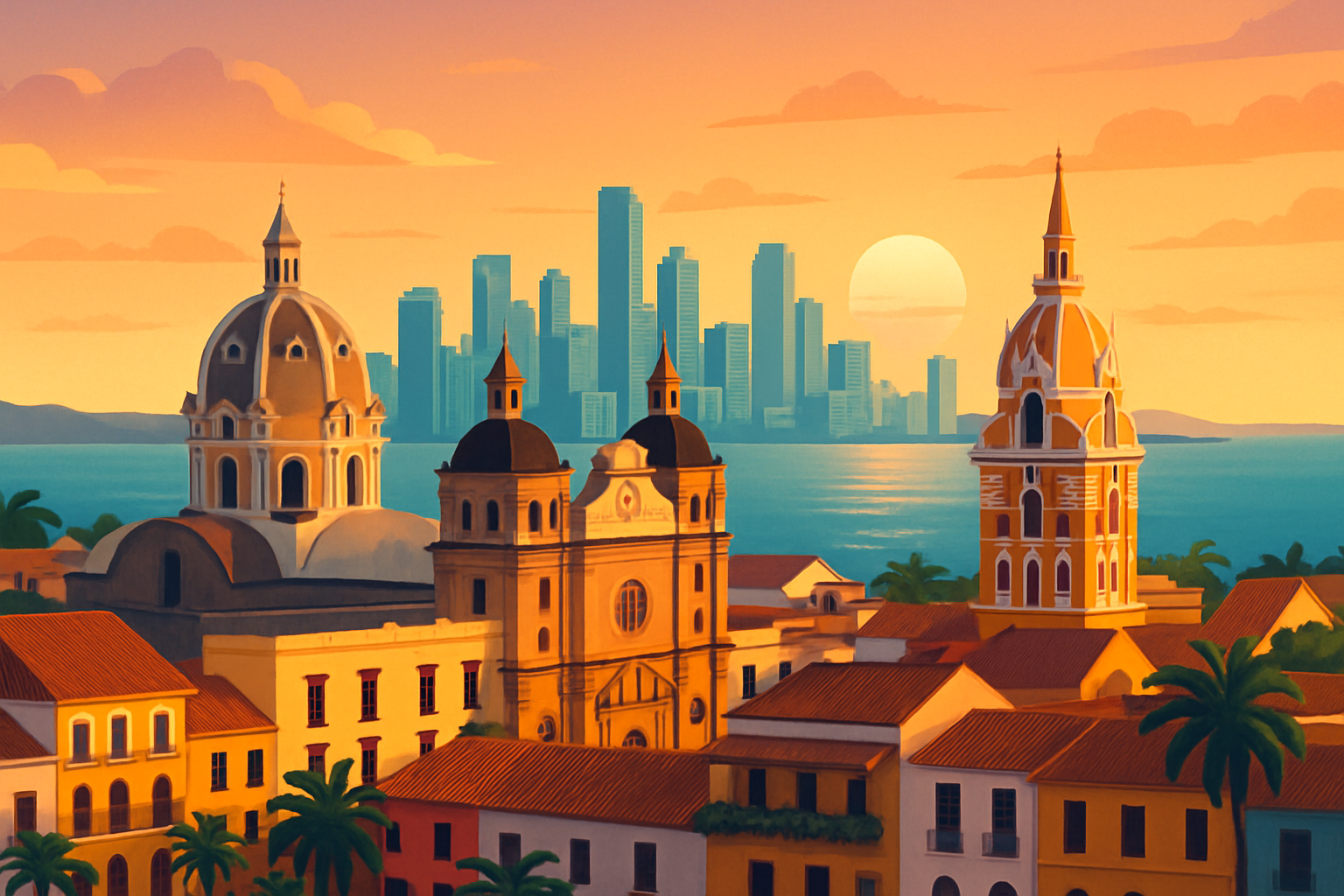
A panoramic view of Cartagena illustrating its unique blend of colonial architecture and modern urban development.
The People of Colombia and Their Unique Social Identity
Colombian identity is deeply woven with threads of resilience and warmth and a vibrant tapestry of diversity. Despite having weathered many social and political storms over the years, Colombians are famed for their close-knit communities and strong family ties that could melt your heart. Music and celebration aren’t just pastimes here—they're practically lifeblood and infuse everyday life with color and rhythm.
Colombians are known not just for their rich culture but also for their genuine warmth and remarkable resilience—qualities that graciously invite visitors to dive into a country bursting with life, hope, and pride that goes far beyond the usual clichés.
Notable Colombian Contributions to World Culture
Every so often, a country leaves an unmistakable mark on the world, and Colombia is no exception. From vibrant rhythms that make you want to dance to literary works that pull at the heartstrings, Colombia’s contributions have quietly but powerfully woven themselves into the global cultural fabric.
Colombia has quietly but powerfully carved out a vibrant niche on the world stage through its rich tapestry of music, literature, sports and art. From legendary artists whose names echo through time to today's fresh faces, Colombians have proudly showcased their identity and shaped how the world views the country.
- Gabriel García Márquez did not just write stories. He practically put magical realism on the map by winning a Nobel Prize and enchanting readers worldwide with his unforgettable tales.
- Shakira is a true international sensation in pop and Latin music. She seamlessly blends Colombian rhythms and dance into her chart-topping hits, making it impossible not to move along.
- Fernando Botero’s claim to fame lies in his unmistakable style. His paintings and sculptures feature delightfully plump, rounded figures that are as intriguing as they are fun to look at.
- Soccer isn’t just a game in Colombia but a passion that runs deep. Stars like James Rodríguez have become more than athletes; they are national heroes who inspire dedicated fanbases that live and breathe the sport.
- Colombian cinema and television are finally getting their due. They are praised more and more for stories that cleverly reflect social realities, all presented with inventive and compelling storytelling.
Why It’s High Time We See Colombia as More Than Just Coffee and Flowers
When considering what is Colombia most known for, focusing solely on coffee and flowers often overlooks the rich tapestry that defines the country. Learning about its geography, cultural heritage, remarkable biodiversity, history and diverse economy paints a much fuller and more colorful picture.

